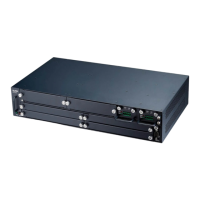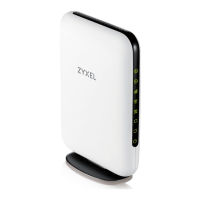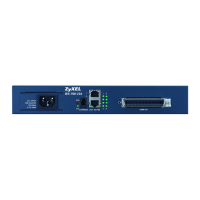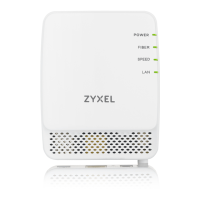OLT2406 User’s Guide
330
CHAPTER 41
RIP
41.1 RIP Overview
This chapter shows you how to configure RIP (Routing Information Protocol).
RIP (Routing Information Protocol) allows a routing device to exchange routing information with other
routers. The Direction field controls the sending and receiving of RIP packets. When set to:
• Both - the OLT will broadcast its routing table periodically and incorporate the RIP information that it
receives.
• Incoming - the OLT will not send any RIP packets but will accept all RIP packets received.
• Outgoing - the OLT will send out RIP packets but will not accept any RIP packets received.
• None - the OLT will not send any RIP packets and will ignore any RIP packets received.
The Version field controls the format and the broadcasting method of the RIP packets that the OLT
sends (it recognizes both formats when receiving). RIP-1 is universally supported; but RIP-2 carries more
information. RIP-1 is probably adequate for most networks, unless you have an unusual network
topology.
Both RIP-2B and RIP-2M send the routing data in RIP-2 format; the difference being that RIP-2B uses
subnet broadcasting while RIP-2M uses multicasting.
41.1.1 Administrative Distance
When two or more than two different routing protocols, such as RIP and OSPF provide multiple routes to
the same destination, the OLT can use the administrative distance of the route to determine which
routing protocol to use and add the route to the routing table.
The lower the administrative distance value is, the more preferable the routing protocol is. If two routes
have the same administrative distance value, the OLT uses the route that has the lowest metric value.
The following table lists the default administrative distance value of the route sources supported on the
OLT.
Table 150 Default Distance Value
ROUTE SOURCE ADMINISTRATIVE DISTANCE
Local 0
Static 1
OSPF 110
RIP 120

